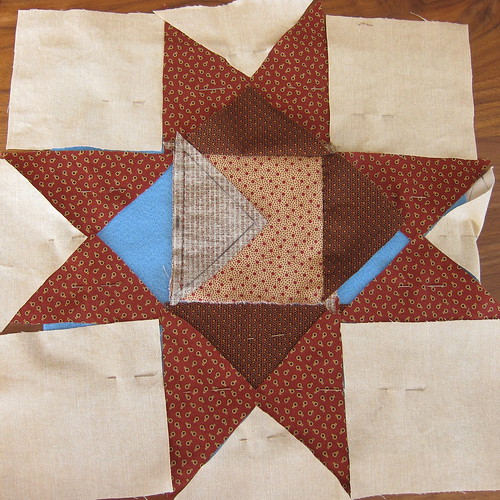This week I started an eight week course in traditional quilting techniques. We’ll be creating a 9 square wall hanging all by hand! This week we used templates to cut our squares, paying careful attention to grain, & then hand pieced it.

By the end of class I had three triangles pieced to the center square with the rest to do at home. The stitching was pretty easy but making sure there were no holes where the corners met up was a little tricky especially on the inside corners when adding in the second set of triangles (anyone have any good tips for this?).

It took me two afternoons to finish piecing it. It still needs pressing. I’m pretty proud of how it looks. You can see a little stitching at one or two of the inside corners but only if you’re REALLY looking. The next four weeks we’ll have to do two squares a week!
© 2005 – 2011 Kathy Lewinski & Susan Cornish



That looks great. Not sure I could do it by hand.
Pretty impressive Kat. I am doing a quilt by hand but not the piecing. I give you credit for your patience. You did a great job. So perfectly aligned. I like the colors too.
When I learned to piece this pattern, we did it in strips so you didn't have inside corners. However, put your pin straight through the corners to hold it then backstitch once in each direction – that should hold it and make the corners match. Also, don't stitch down the seam allowance so it can fold whichever way it needs to. Sometimes pressing it one way looks better than pressing the other.
it looks great!